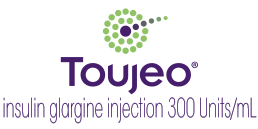People get personal
Getting on and staying on insulin can be daunting. There’s a lot to learn and more to manage. But you’re not alone. Listen to the people who’ve come before you and have figured out ways to manage their diabetes. Here are their inspiring stories.
-
07:14
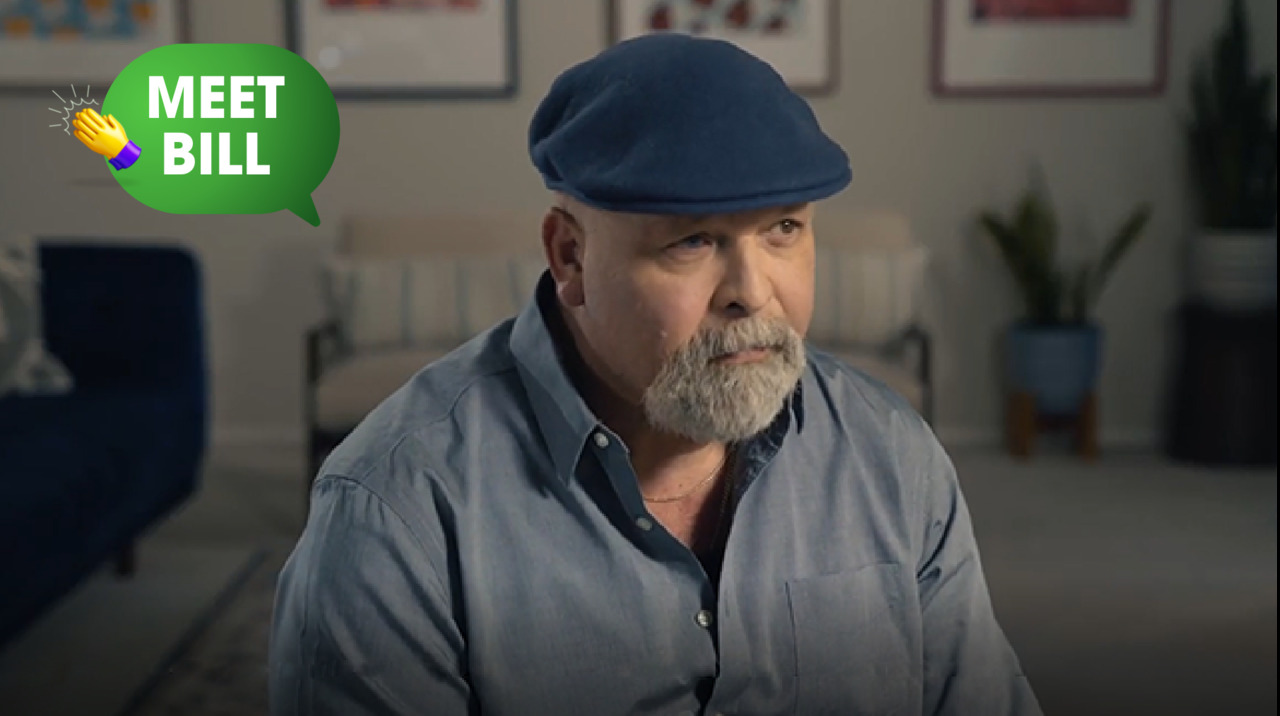 Meet Bill09:38
Meet Bill09:38 Meet Bill06:11
Meet Bill06:11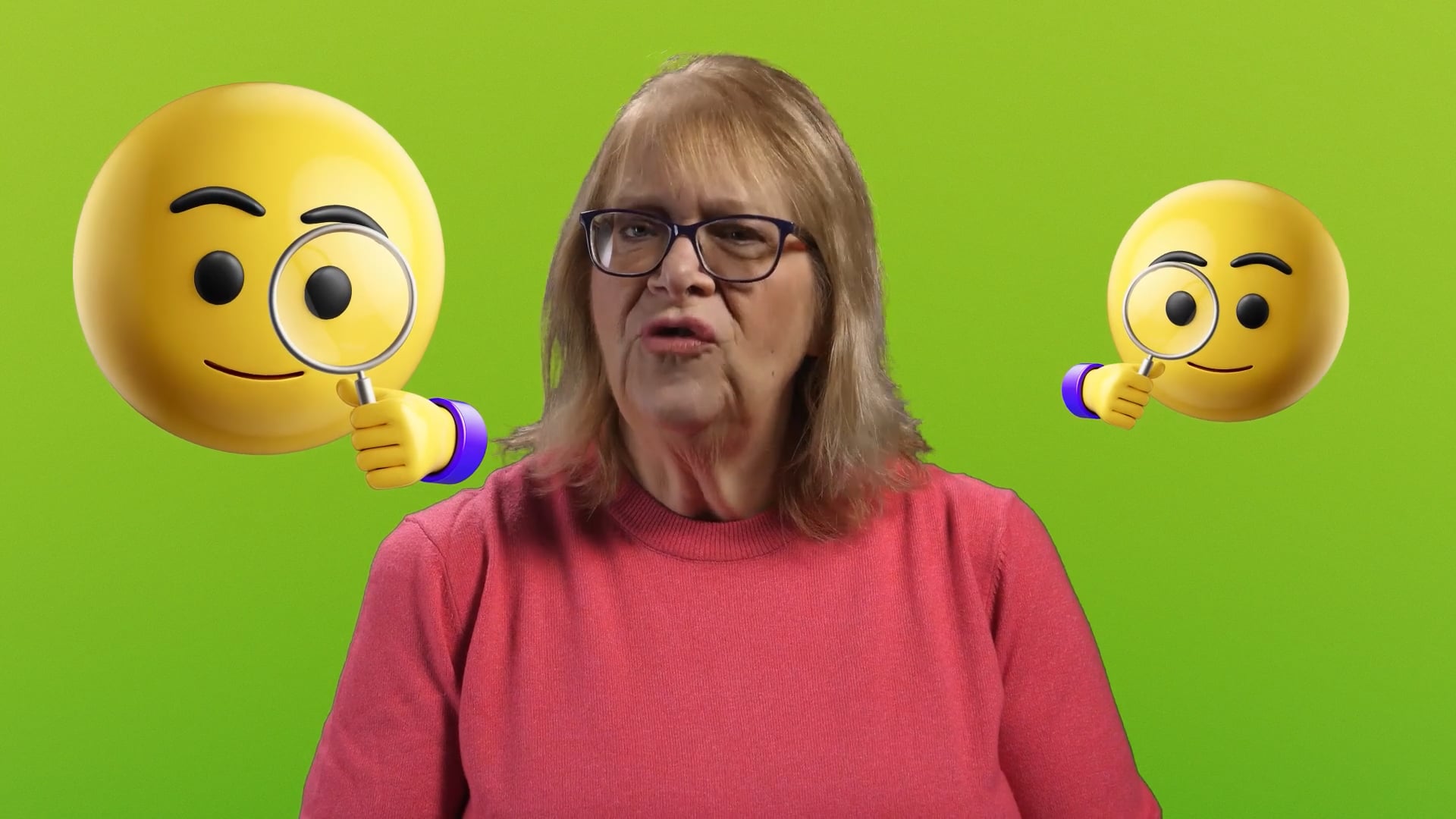 Starting on Toujeo (insulin glargine) injection 300 Units/mL06:32
Starting on Toujeo (insulin glargine) injection 300 Units/mL06:32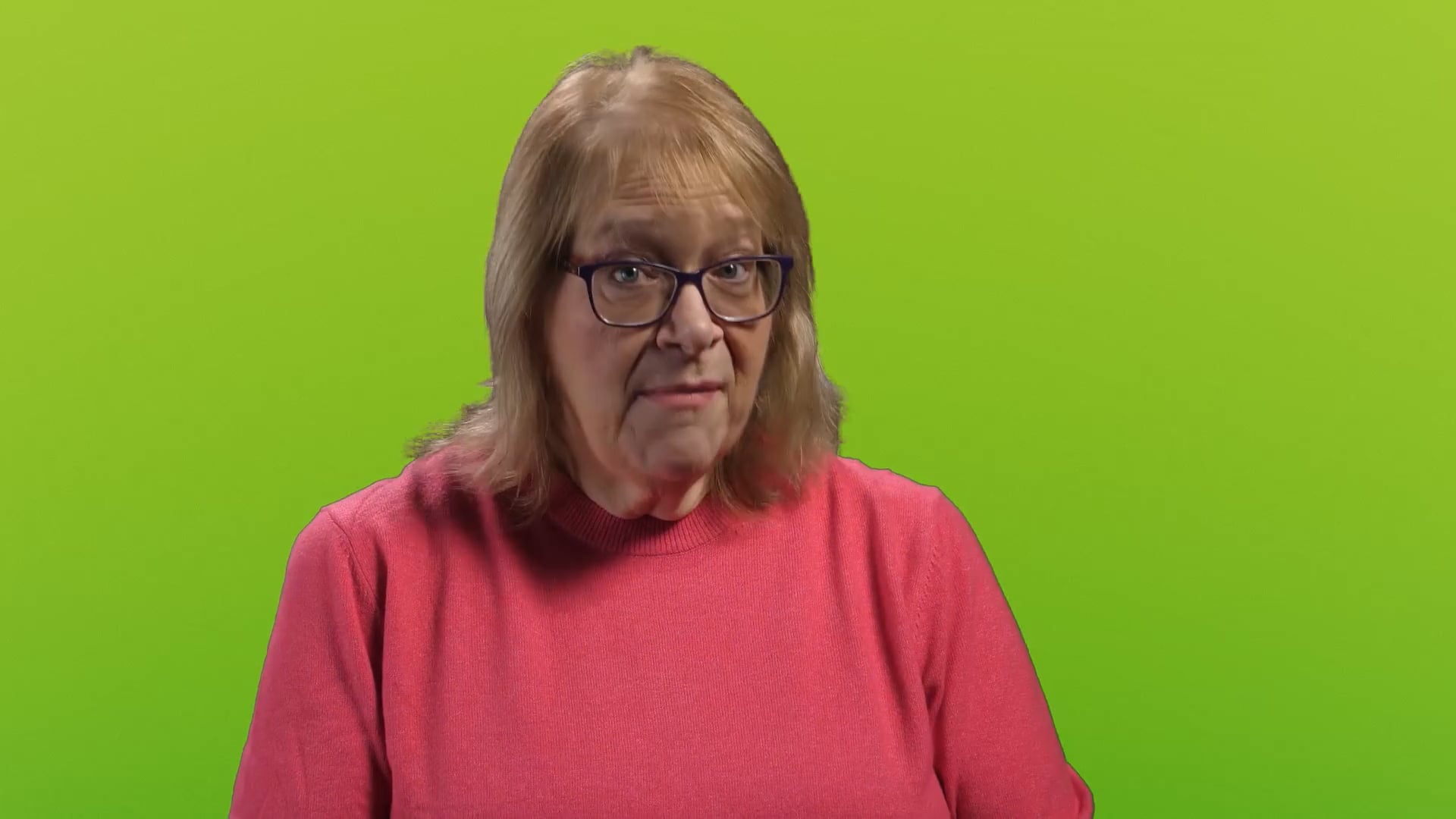 Taking an Active Role in the Treatment Discussion06:32
Taking an Active Role in the Treatment Discussion06:32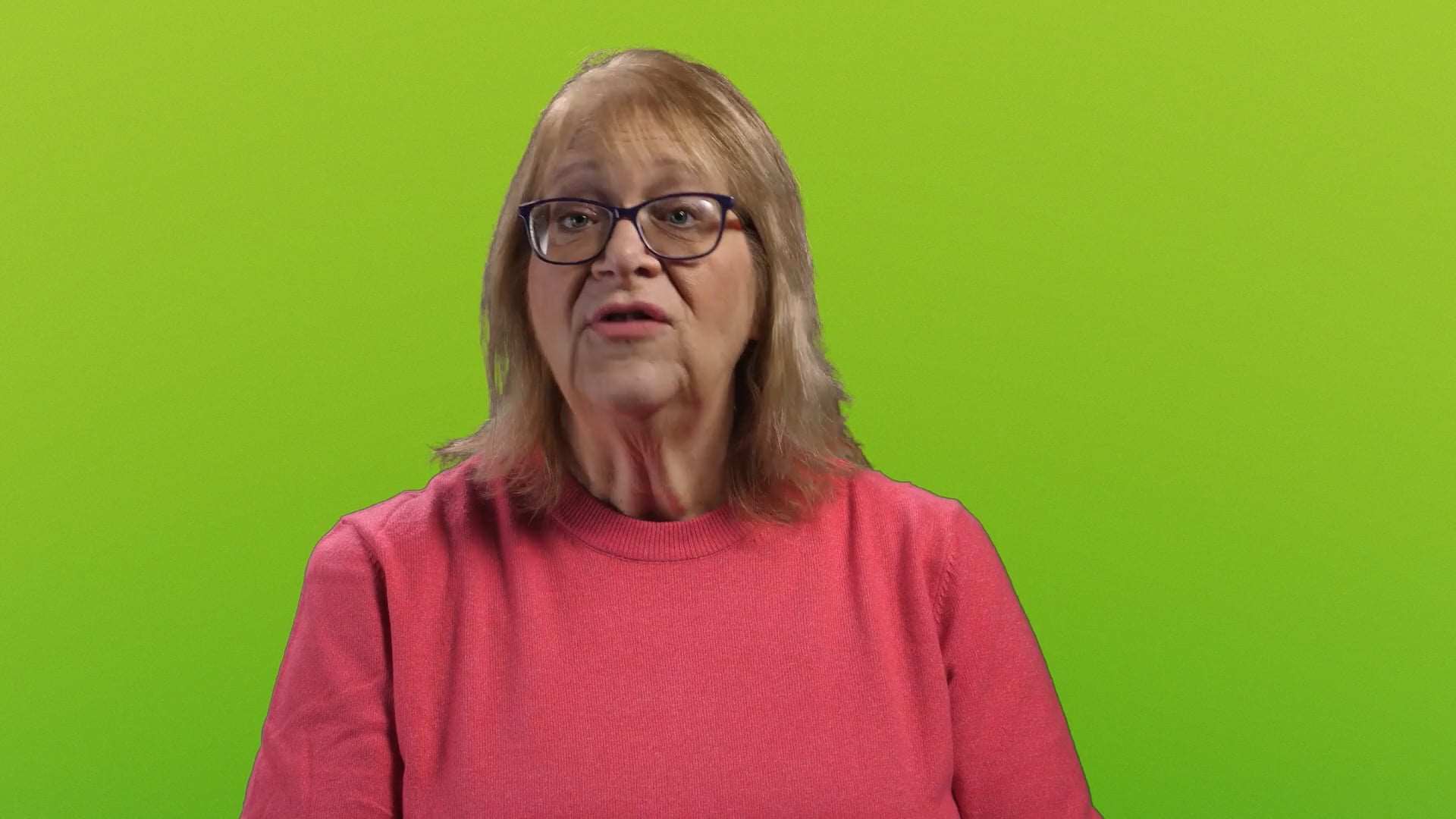 Checking In After Starting Toujeo (insulin glargine) injection 300 Units/mL
Checking In After Starting Toujeo (insulin glargine) injection 300 Units/mL -
02:58
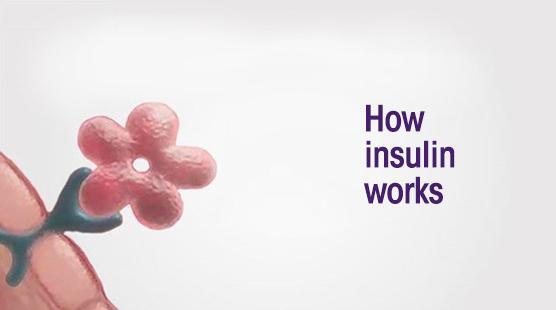 Insulin glucose02:26
Insulin glucose02:26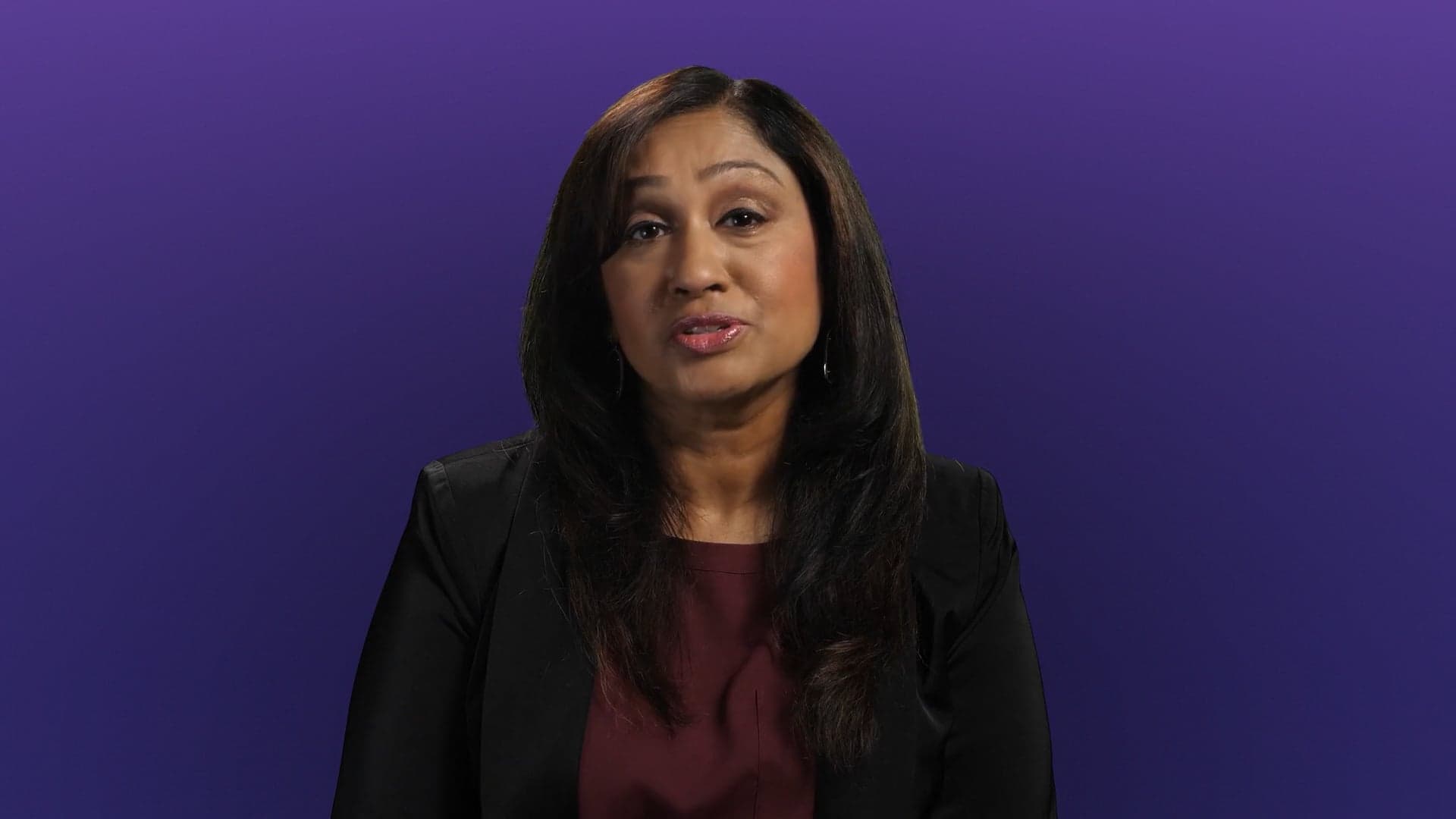 Change Can Be Scary02:02
Change Can Be Scary02:02 Insulin the Next Step02:23
Insulin the Next Step02:23 Feeling Overwhelmed?
Feeling Overwhelmed? -
12:46
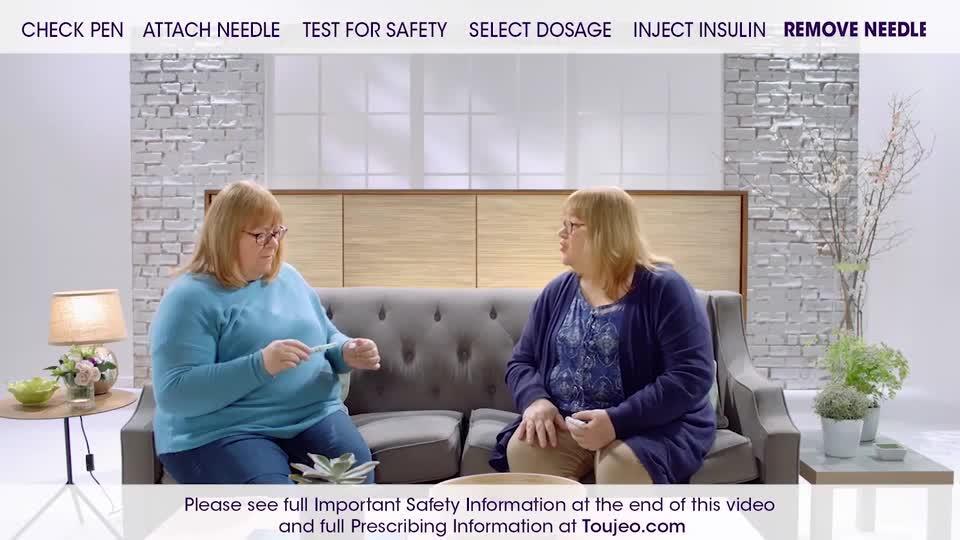 How to Use Toujeo SoloStar Pens02:02
How to Use Toujeo SoloStar Pens02:02 Insulin the Next Step02:26
Insulin the Next Step02:26 Change Can Be Scary01:16
Change Can Be Scary01:16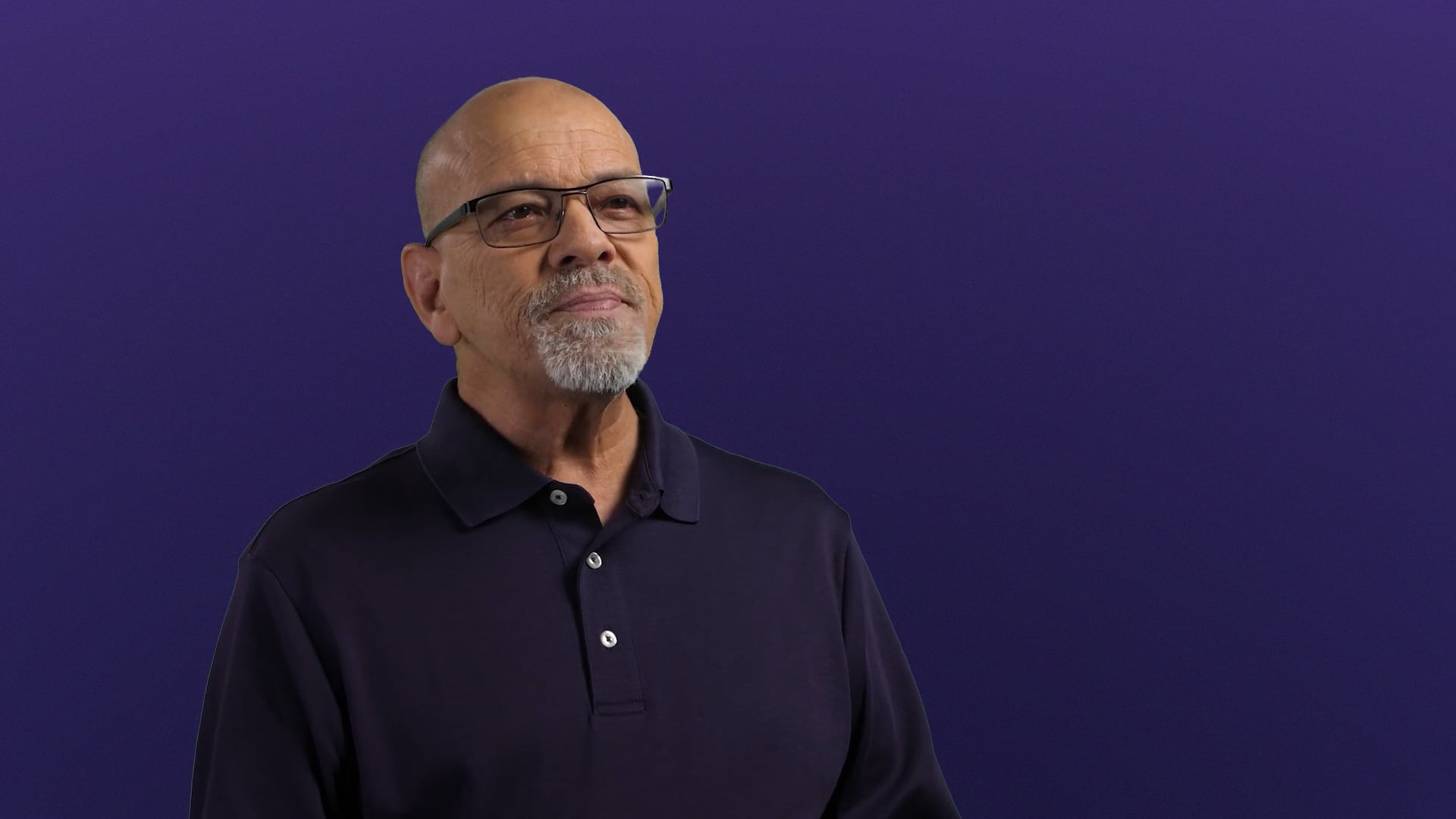 Fear of Starting Insulin
Fear of Starting Insulin -
01:16
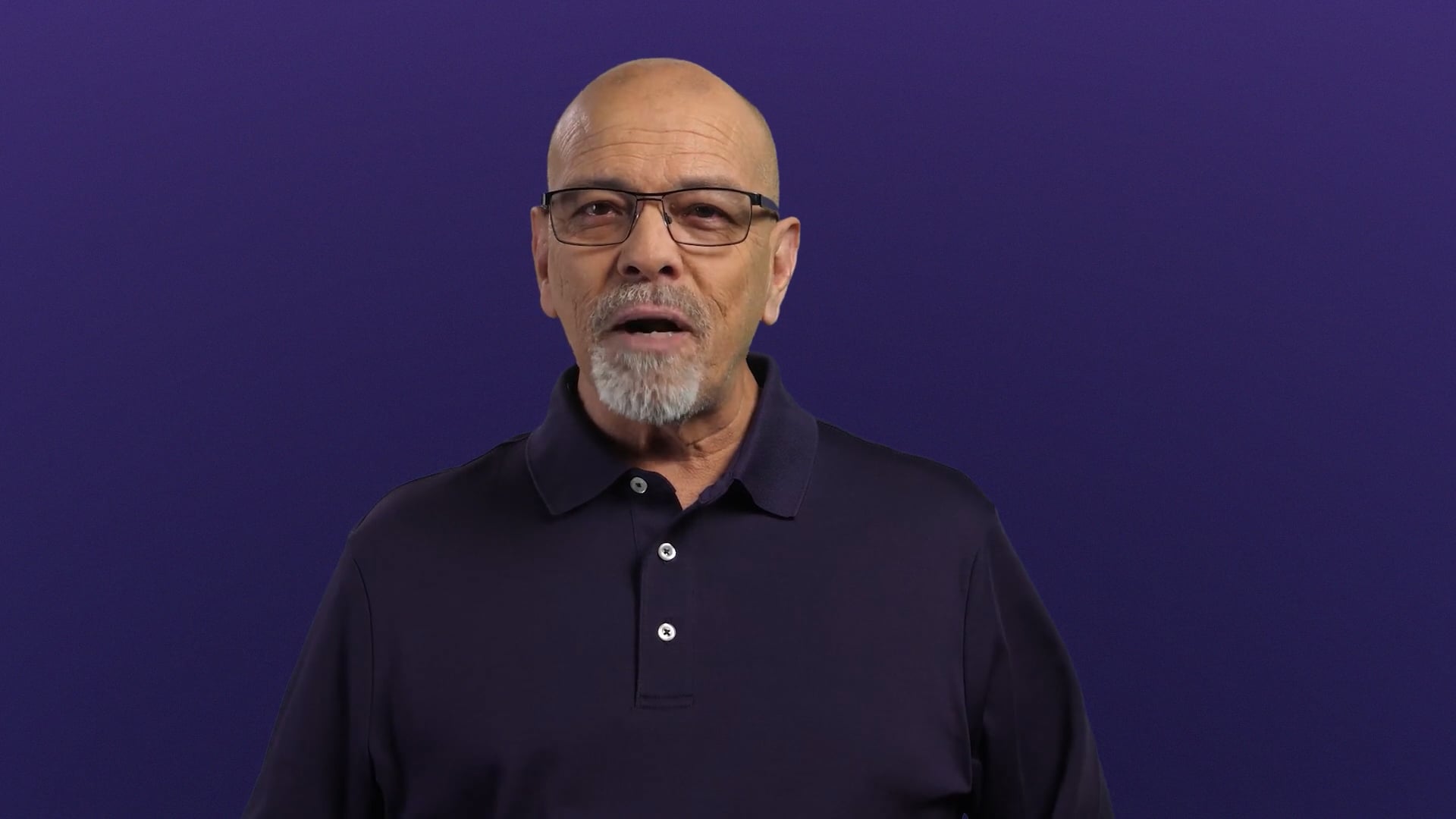 Staying on Track at Holiday Gatherings or Social Events01:54
Staying on Track at Holiday Gatherings or Social Events01:54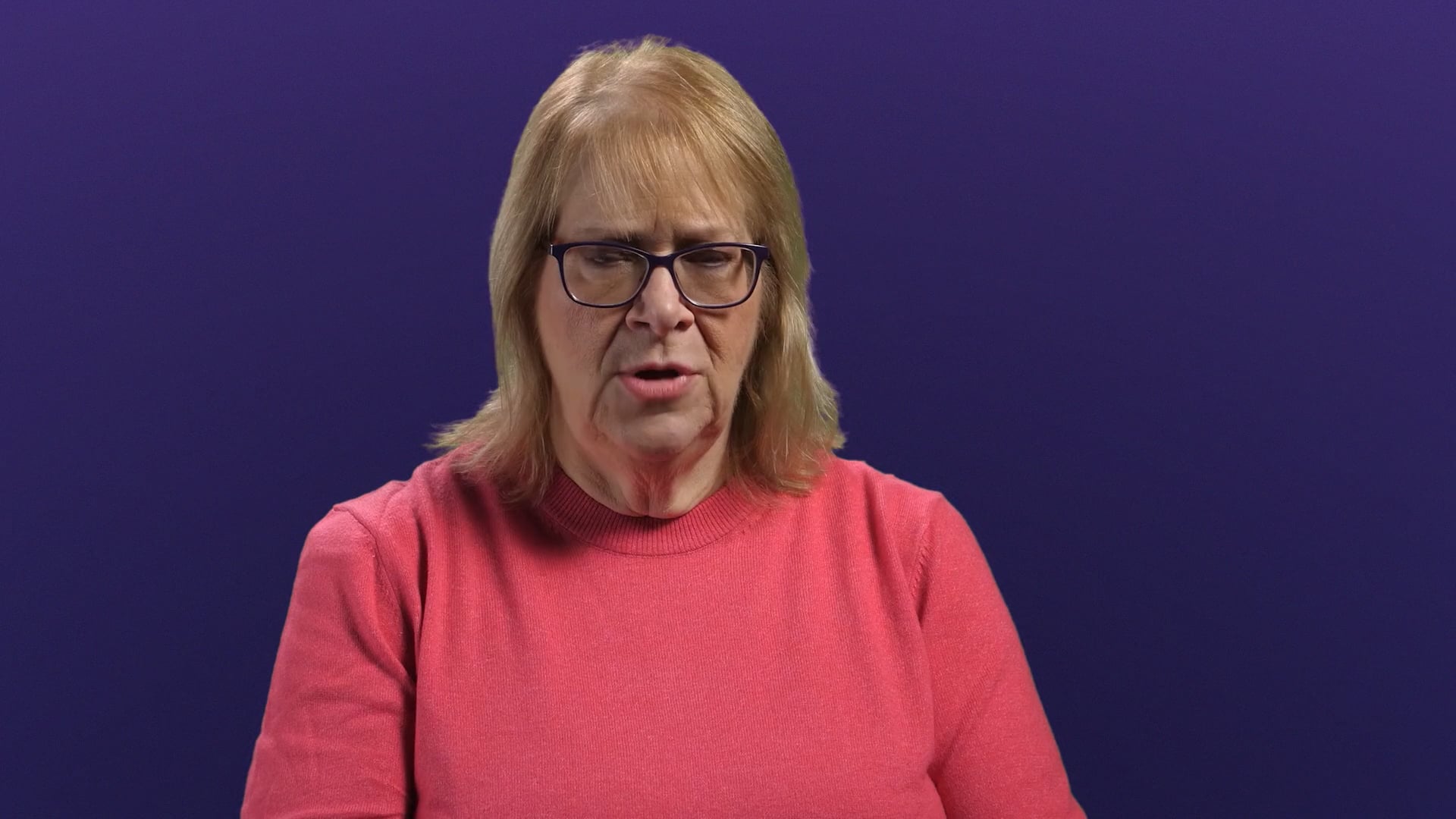 Getting Active01:35
Getting Active01:35 Dealing with Food Cravings02:22
Dealing with Food Cravings02:22 Lifestyle Changes, Talking to Your Doctor, and Taking Small Steps
Lifestyle Changes, Talking to Your Doctor, and Taking Small Steps -
01:30
 Communicating with Friends and Family06:32
Communicating with Friends and Family06:32 Taking an Active Role in the Treatment Discussion02:11
Taking an Active Role in the Treatment Discussion02:11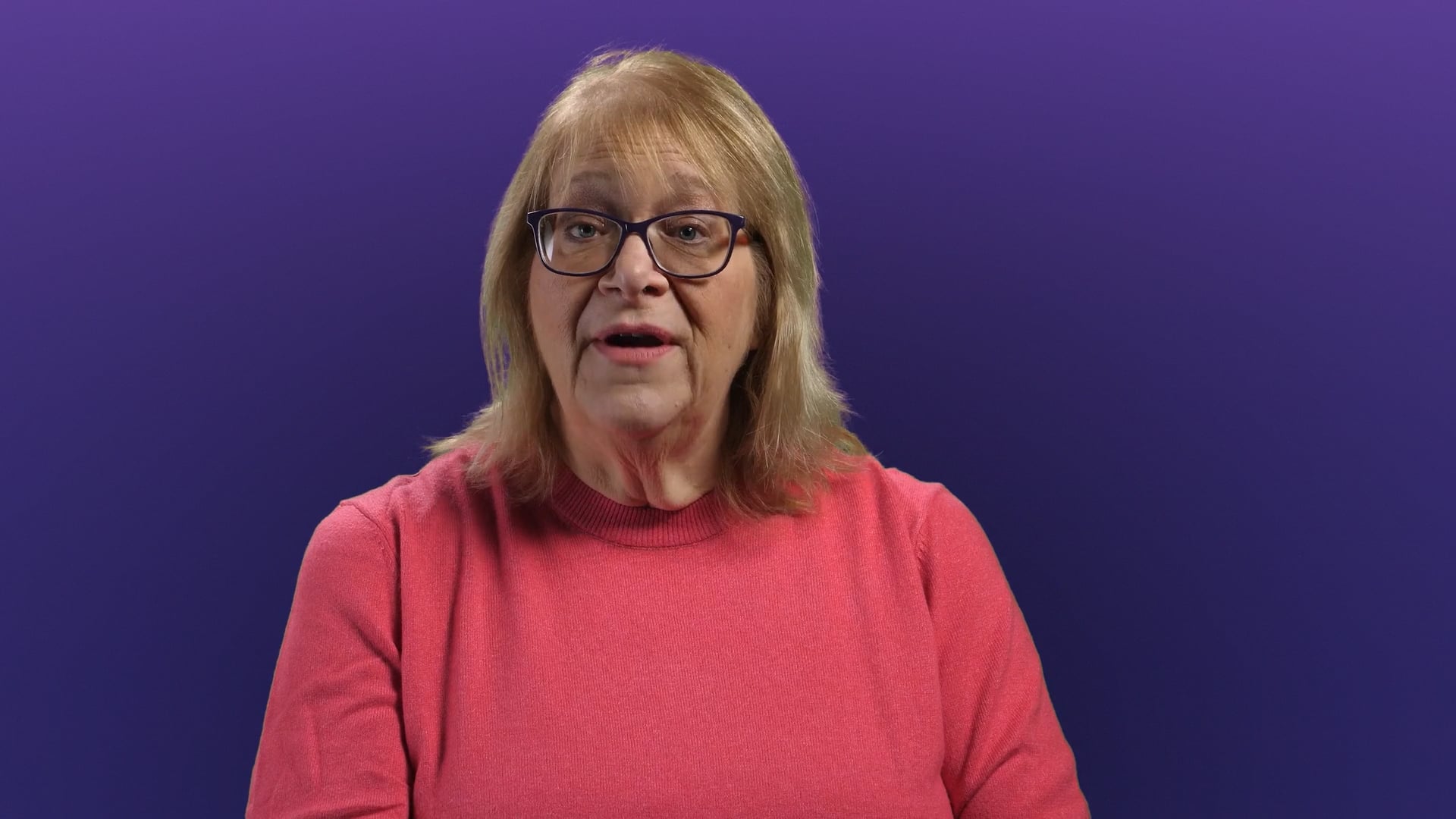 Building a Support System
Building a Support System
These are actual patients. Patient stories reflect the real-life experiences of persons diagnosed with diabetes who have been prescribed Toujeo. However, individual experiences may vary. Patient stories are not necessarily representative of what another person using Toujeo may experience. For medical advice, please consult your healthcare provider.
These patients were compensated for their time creating these videos.
Frequently asked questions by people with diabetes like you
Want to learn more about insulin? Here are some common questions that you may want to discuss further with your doctor when asking about Toujeo and Toujeo Max SoloStar ®
Longer-acting insulin is designed to work like your body’s natural insulin production between meals and overnight to help control blood sugar.
Toujeo may be an important step toward blood sugar control. Its release is slow and continuous with no peaks or wear-offs between doses. Toujeo can help blood sugar levels stay within the American Diabetes Association (ADA) target zone (80-130 mg/dL) around the clock. Toujeo should be taken once daily at the same time each day.
Yes, but your doctor will determine which medications are right for you. Talk with your doctor about the medications and supplements you take, especially those called thiazolidinediones or TZDs because they can change how insulin works.
Ask your doctor about any adjustments that need to be made to any other medications you might be taking while taking once-daily Toujeo.
The most common side effect is low blood sugar levels, called hypoglycemia. Ask your doctor about the signs and symptoms of hypoglycemia, how to monitor your blood sugar, and what to do if you have a hypoglycemic event.
Yes, insulin glargine U-300 is an unbranded biologic for Toujeo, ensuring you have the same product experience as Toujeo. Learn more here.
From the makers of Toujeo



Insulin glargine U-300—the unbranded biologic that is identical to Toujeo
Winthrop US is a Sanofi company dedicated to delivering unbranded versions of Sanofi products, including this unbranded biologic for Toujeo.
Insulin glargine U-300 is an unbranded biologic for Toujeo, ensuring you have the same product experience as Toujeo.
- Insulin glargine U-300 uses the same manufacturing process as Toujeo
- It is identical to Toujeo in molecular weight distribution, quality control parameters, and inactive ingredients


Learn more about WINTHROP
Winthrop, a Sanofi Company, is dedicated to ensuring patients get the same quality product they would from Sanofi’s brand name products. Winthrop products are identical to Sanofi products in molecular weight distribution, quality control parameters, inactive ingredients, and other key factors. Quality, affordability, and service are the foundation of our relationship with patients and those that serve them.
To find out more, please contact WinthropUS@sanofi.com.
Insulin glargine U-300 SoloStar injection and Insulin glargine U-300 Max SoloStar injection launched into the market on January 1, 2024. The availability in local markets is dependent on payer coverage, pharmacy purchasing patterns, and wholesaler stocking decisions. All major national and regional wholesalers have agreed to stock these options.

Join TeamingUp to get support.
There’s a lot to think about when you live with diabetes. What you eat, how you exercise, and creating a routine are all essential to managing your diabetes well.
At TeamingUp, you’ll find tools, videos, and tips to help get you and keep you on track. Learn how to plan and cook delicious meals, create exercise routines, and more. Hear from peers about how they’re managing their diabetes.

You’ve seen others’ stories. Now get help starting the conversation about Toujeo.
Whether you’re new to insulin or switching from another pen, you’ve got a guide to help you talk to your doctor about Toujeo. Download the guide most appropriate for you and don’t be afraid to speak up!

Pay no more than $35* per month for Toujeo Max
Use the Insurance Lookup tool to see if you’re covered.
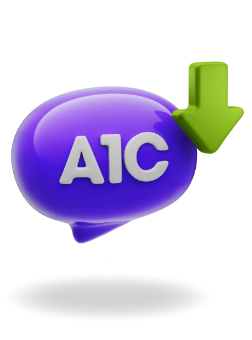
Proven A1C reduction
Toujeo Max could help you control your A1C.
What are Toujeo and Insulin Glargine U-300 injection?
Prescription Toujeo and Insulin Glargine U-300 are long-acting man-made insulins used to control high blood sugar in adults and children who are 6 years of age and older with diabetes mellitus.
- Toujeo or Insulin Glargine U-300 is not for the treatment of diabetic ketoacidosis
- It is not known if Toujeo or Insulin Glargine U-300 is safe and effective in children under 6 years of age
Important Safety Information
Important Safety Information
Do not use Toujeo or Insulin Glargine U-300 if you have low blood sugar or if you are allergic to insulin or any of the ingredients in Toujeo or Insulin Glargine U-300.
Do not share your pen(s) with other people, even if the needle has been changed. You may give other people a serious infection or get a serious infection from them.
Before starting Toujeo or Insulin Glargine U-300, tell your doctor about all your medical conditions, including if you have liver or kidney problems, if you are pregnant or planning to become pregnant, or if you are breastfeeding or planning to breastfeed.
Change (rotate) your injection sites within the area you chose with each dose to reduce your risk of getting pitted or thickened skin (lipodystrophy) and skin with lumps (localized cutaneous amyloidosis) at the injection sites. Do not use the same spot for each injection or inject where the skin is pitted, thickened, lumpy, tender, bruised, scaly, hard, scarred, or damaged.
Heart failure can occur if you are taking insulin together with pills called TZDs (thiazolidinediones), even if you have never had heart failure or other heart problems. If you have heart failure, it may get worse while you take TZDs with Toujeo or Insulin Glargine U-300. Your treatment with TZDs and Toujeo, or Insulin Glargine U-300, may need to be changed or stopped by your doctor if you have new or worsening heart failure. Tell your doctor if you have any new or worsening symptoms including:
- Shortness of breath
- Sudden weight gain
- Swelling of your ankles or feet
Tell your doctor about all the medications you take, including OTC medicines, vitamins, and supplements, and herbal supplements.
Toujeo or Insulin Glargine U-300 should be taken at the same time once a day. Test your blood sugar levels daily while using any insulin. Do not change your dose or type of insulin without talking to your doctor. Verify you have the correct insulin before each injection. Do NOT use a syringe to remove Toujeo or Insulin Glargine U-300 from your pen. Your dose for Toujeo or Insulin Glargine U-300 may be different from other insulins you have taken. Any change of insulin should be made cautiously and only under medical supervision.
Do NOT dilute or mix Toujeo or Insulin Glargine U-300 with any other insulin or solution. It will not work as intended and you may lose blood sugar control, which could be serious. Use Toujeo or Insulin Glargine U-300 only if the solution is clear and colorless with no particles visible.
While using Toujeo or Insulin Glargine U-300, do not drive or operate heavy machinery until you know how Toujeo or Insulin Glargine U-300 affects you. Don’t drink alcohol or use other medicines that contain alcohol.
The most common side effect of Toujeo and Insulin Glargine U-300 is low blood sugar (hypoglycemia), which may be serious and life-threatening. Severe hypoglycemia may cause harm to your heart or brain. Symptoms of serious low blood sugar may include shaking, sweating, fast heartbeat, and blurred vision. The long-acting effect of Toujeo and Insulin Glargine U-300 may delay recovery from low blood sugar compared to shorter-acting insulins.
Toujeo and Insulin Glargine U-300 may cause severe allergic reactions that can lead to death. Get medical help right away if you have:
- A rash over your whole body
- Shortness of breath
- Swelling of your face, tongue, or throat
- Extreme drowsiness, dizziness, or confusion
- Trouble breathing
- Fast heartbeat
- Sweating
Toujeo and Insulin Glargine U-300 may have additional side effects including swelling, weight gain, low potassium, and injection site reactions which may include change in fat tissue, skin thickening, redness, swelling, and itching.
Toujeo SoloStar, Insulin Glargine U-300 SoloStar, Toujeo Max SoloStar and Insulin Glargine U-300 Max SoloStar are single-patient-use prefilled insulin pens. It is important to perform a safety test when using a new pen for the first time. Talk to your doctor about proper injection technique and follow instructions in the Instruction Leaflet that comes with your Toujeo SoloStar, Insulin Glargine U-300 SoloStar, Toujeo Max SoloStar, or Insulin Glargine U-300 Max SoloStar pen.
If you are a patient experiencing problems with a Sanofi US product, please contact Sanofi US at 1-800-633-1610.
The health information contained herein is provided for general educational purposes only. Your healthcare professional is the single best source of information regarding your health. Please consult your healthcare professional if you have any questions about your health or treatment.
*Eligibility Restrictions & Offer Terms:
Insulins Valyou Savings Program: This savings program is not insurance. For a complete list of participating brands, products, and National Drug Codes (NDCs) Click Here. This offer is not valid for prescriptions covered by or submitted for reimbursement, in whole or in part, under Medicare, Medicaid, VA, DOD, TRICARE, similar federal or state programs, including any state pharmaceutical programs. If you have an Affordable Care (Health Care Exchange) plan, you may still be qualified to receive and use this savings card. Please note: the Federal Employees Health Benefits (FEHB) Program is not a federal or state government health care program for purposes of the savings program. Void where prohibited by law. The Savings Program applies to the cost of medication. There are other relevant costs associated with overall treatment. Sanofi reserves the right to rescind, revoke, terminate, or amend this offer, eligibility, and terms of use at any time without notice. Upon registration, patients will receive all program details. For questions regarding your eligibility or benefits, or if you wish to discontinue your participation, call the Insulins Valyou Savings Program at (833) 813-0190 (833) 813-0190 (8:00 am-8:00 pm EST, Monday-Friday).
Sanofi Insulins Co-pay Savings Program: This savings program is not insurance. For a complete list of participating brands, products, and National Drug Codes (NDCs) Click Here. This offer is not valid for prescriptions covered by or submitted for reimbursement, in whole or in part, under Medicare, Medicaid, VA, DOD, TRICARE, similar federal or state programs, including any state pharmaceutical programs. If you have an Affordable Care (Health Care Exchange) plan, you may still be qualified to receive and use this savings card. Please note: the Federal Employees Health Benefits (FEHB) Program is not a federal or state government health care program for purposes of the savings program. Void where prohibited by law. There are other relevant costs associated with overall treatment. Sanofi reserves the right to rescind, revoke, terminate, or amend this offer, eligibility, and terms of use at any time without notice. Upon registration, patients will receive all program details. For questions regarding your eligibility or benefits, or if you wish to discontinue your participation, call the Sanofi Insulins Co-pay Savings Program at (866) 255-8661 (866) 255-8661 (8:00 am-8:00 pm EST, Monday-Friday).
Important Safety Information
Do not use Toujeo or Insulin Glargine U-300 if you have low blood sugar or if you are allergic to insulin or any of the ingredients in Toujeo or Insulin Glargine U-300.
Do not share your pen(s) with other people, even if the needle has been changed. You may give other people a serious infection or get a serious infection from them.
Before starting Toujeo or Insulin Glargine U-300, tell your doctor about all your medical conditions, including if you have liver or kidney problems, if you are pregnant or planning to become pregnant, or if you are breastfeeding or planning to breastfeed.
Change (rotate) your injection sites within the area you chose with each dose to reduce your risk of getting pitted or thickened skin (lipodystrophy) and skin with lumps (localized cutaneous amyloidosis) at the injection sites. Do not use the same spot for each injection or inject where the skin is pitted, thickened, lumpy, tender, bruised, scaly, hard, scarred, or damaged.
Heart failure can occur if you are taking insulin together with pills called TZDs (thiazolidinediones), even if you have never had heart failure or other heart problems. If you have heart failure, it may get worse while you take TZDs with Toujeo or Insulin Glargine U-300. Your treatment with TZDs and Toujeo, or Insulin Glargine U-300, may need to be changed or stopped by your doctor if you have new or worsening heart failure. Tell your doctor if you have any new or worsening symptoms including:
- Shortness of breath
- Sudden weight gain
- Swelling of your ankles or feet
Tell your doctor about all the medications you take, including OTC medicines, vitamins, and supplements, and herbal supplements.
Toujeo or Insulin Glargine U-300 should be taken at the same time once a day. Test your blood sugar levels daily while using any insulin. Do not change your dose or type of insulin without talking to your doctor. Verify you have the correct insulin before each injection. Do NOT use a syringe to remove Toujeo or Insulin Glargine U-300 from your pen. Your dose for Toujeo or Insulin Glargine U-300 may be different from other insulins you have taken. Any change of insulin should be made cautiously and only under medical supervision.
Do NOT dilute or mix Toujeo or Insulin Glargine U-300 with any other insulin or solution. It will not work as intended and you may lose blood sugar control, which could be serious. Use Toujeo or Insulin Glargine U-300 only if the solution is clear and colorless with no particles visible.
While using Toujeo or Insulin Glargine U-300, do not drive or operate heavy machinery until you know how Toujeo or Insulin Glargine U-300 affects you. Don’t drink alcohol or use other medicines that contain alcohol.
The most common side effect of Toujeo and Insulin Glargine U-300 is low blood sugar (hypoglycemia), which may be serious and life-threatening. Severe hypoglycemia may cause harm to your heart or brain. Symptoms of serious low blood sugar may include shaking, sweating, fast heartbeat, and blurred vision. The long-acting effect of Toujeo and Insulin Glargine U-300 may delay recovery from low blood sugar compared to shorter-acting insulins.
Toujeo and Insulin Glargine U-300 may cause severe allergic reactions that can lead to death. Get medical help right away if you have:
- A rash over your whole body
- Shortness of breath
- Swelling of your face, tongue, or throat
- Extreme drowsiness, dizziness, or confusion
- Trouble breathing
- Fast heartbeat
- Sweating
Toujeo and Insulin Glargine U-300 may have additional side effects including swelling, weight gain, low potassium, and injection site reactions which may include change in fat tissue, skin thickening, redness, swelling, and itching.
Toujeo SoloStar, Insulin Glargine U-300 SoloStar, Toujeo Max SoloStar and Insulin Glargine U-300 Max SoloStar are single-patient-use prefilled insulin pens. It is important to perform a safety test when using a new pen for the first time. Talk to your doctor about proper injection technique and follow instructions in the Instruction Leaflet that comes with your Toujeo SoloStar, Insulin Glargine U-300 SoloStar, Toujeo Max SoloStar, or Insulin Glargine U-300 Max SoloStar pen.
If you are a patient experiencing problems with a Sanofi US product, please contact Sanofi US at 1-800-633-1610.
The health information contained herein is provided for general educational purposes only. Your healthcare professional is the single best source of information regarding your health. Please consult your healthcare professional if you have any questions about your health or treatment.
*Eligibility Restrictions & Offer Terms:
Insulins Valyou Savings Program: This savings program is not insurance. For a complete list of participating brands, products, and National Drug Codes (NDCs) Click Here. This offer is not valid for prescriptions covered by or submitted for reimbursement, in whole or in part, under Medicare, Medicaid, VA, DOD, TRICARE, similar federal or state programs, including any state pharmaceutical programs. If you have an Affordable Care (Health Care Exchange) plan, you may still be qualified to receive and use this savings card. Please note: the Federal Employees Health Benefits (FEHB) Program is not a federal or state government health care program for purposes of the savings program. Void where prohibited by law. The Savings Program applies to the cost of medication. There are other relevant costs associated with overall treatment. Sanofi reserves the right to rescind, revoke, terminate, or amend this offer, eligibility, and terms of use at any time without notice. Upon registration, patients will receive all program details. For questions regarding your eligibility or benefits, or if you wish to discontinue your participation, call the Insulins Valyou Savings Program at (833) 813-0190 (833) 813-0190 (8:00 am-8:00 pm EST, Monday-Friday).
Sanofi Insulins Co-pay Savings Program: This savings program is not insurance. For a complete list of participating brands, products, and National Drug Codes (NDCs) Click Here. This offer is not valid for prescriptions covered by or submitted for reimbursement, in whole or in part, under Medicare, Medicaid, VA, DOD, TRICARE, similar federal or state programs, including any state pharmaceutical programs. If you have an Affordable Care (Health Care Exchange) plan, you may still be qualified to receive and use this savings card. Please note: the Federal Employees Health Benefits (FEHB) Program is not a federal or state government health care program for purposes of the savings program. Void where prohibited by law. There are other relevant costs associated with overall treatment. Sanofi reserves the right to rescind, revoke, terminate, or amend this offer, eligibility, and terms of use at any time without notice. Upon registration, patients will receive all program details. For questions regarding your eligibility or benefits, or if you wish to discontinue your participation, call the Sanofi Insulins Co-pay Savings Program at (866) 255-8661 (866) 255-8661 (8:00 am-8:00 pm EST, Monday-Friday).

